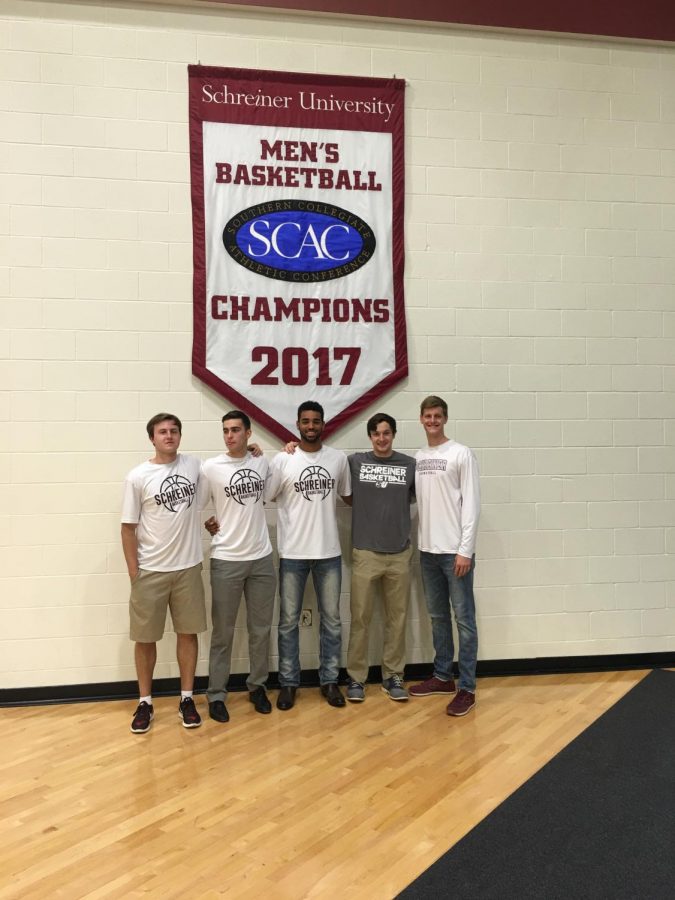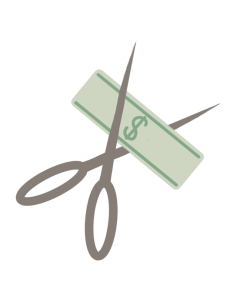Division III athletics: nothing to be ashamed of
Preston Bigley and teammates pose under their championship banner. Schreiner University was the Southern Collegiate Athletic Conference Champions in 2017.
April 6, 2021
What is more important in life? Following your passion and developing your potential or reaching for something based purely on status? I would go with the former.
Taylor Sutlive, a former Division I basketball player, now coach of an Amateur Athletic Union girls’ basketball program called Unite Skills Academy, offered great insight into athletes and their relationship with the lower-division colleges. He stresses “even though some athletes aspire to go Division I, sometimes Division III is the best fit.”
Sutlive passionately believes “finding a college athletic program that will make you happy is most important.” He acknowledges “You don’t have to make it to a Division I school right out of high school. You can always work your way up the ladder within college years.”
College athletics is a dream every young athlete has at one point in their career. As a former Division III basketball player, I would be remiss not to say that if you asked an athlete if they would rather play at a Division I level or Division III level, they would laugh you out of their respective court or field.
Besides Junior College, it is no secret that Division III athletics is the least talented and most often least competitive NCAA athletic division. Regardless, Division III athletics is defined by three principles: discover, develop and dedicate. With this in mind, there is no shame in choosing to participate in a Division III athletic program.
Specifically for basketball, media platforms such as Ballislife, TexasHoops and Rivals grossly undervalue Division III; however, a young athlete can feel a profound sense of pride, accomplishment and competitiveness performing at a D III level. Huge misconceptions and stigmas are surrounding Division III sports that need addressing.
Statistically, according to official NCAA research, the chances of a high school athlete making it to the Division I level in their sport is around 2.5%. Where does that leave the rest of the young athletes that are not awarded the opportunity to play Division I? Faced with a lack of physical attributes, opportunities or recruitment, high school athletes should consider Division III.
A former All-American Division III basketball player and now professional named Keenan Gumbs transferred to a Division I basketball program, Liberty University, after a four year stint with Schreiner University (Division III). From his experiences, Gumbs understands the similarities and differences between low-level and high-level division basketball. “I wanted to play Division I right after high school; that was the goal. My mindset was to get out of Schreiner as soon as possible, but I didn’t remind myself of that daily. I enjoyed everyday life, enjoying friends and the community,” Gumbs stated.
He continued “the biggest difference between Division I and Division III athletics is that the size and athleticism are at a higher level in Division I, but when it comes to IQ and skills, there is not that much of a difference.” Asked what advice he would lend to a high school player who is reluctant to explore Division III options, he emphasized self-assessment is key, “Do you really want to pursue basketball? Yes or No.” Gumbs says that Division III provided him the opportunity to meet some of the best people in his life and that there are things Division III athletics offers that you would not even receive in pro sports. Who knows, he might end up as the next Miami Heat Star Duncan Robison and find his way from Division III to the NBA.
In a larger context, the NCAA also staggeringly reveals that only 7.3% of all high school athletes make it far enough to play in any level of the NCAA. Therefore, no matter what NCAA division an athlete chooses to play, they should know that their hard work and dedication have allowed them the opportunity to be in a rare company. Every athlete should pursue their dreams despite external and internal doubts; however, becoming a lower NCAA division athlete should not be considered a failure. Instead, it is a unique opportunity to better oneself athletically and personally.







